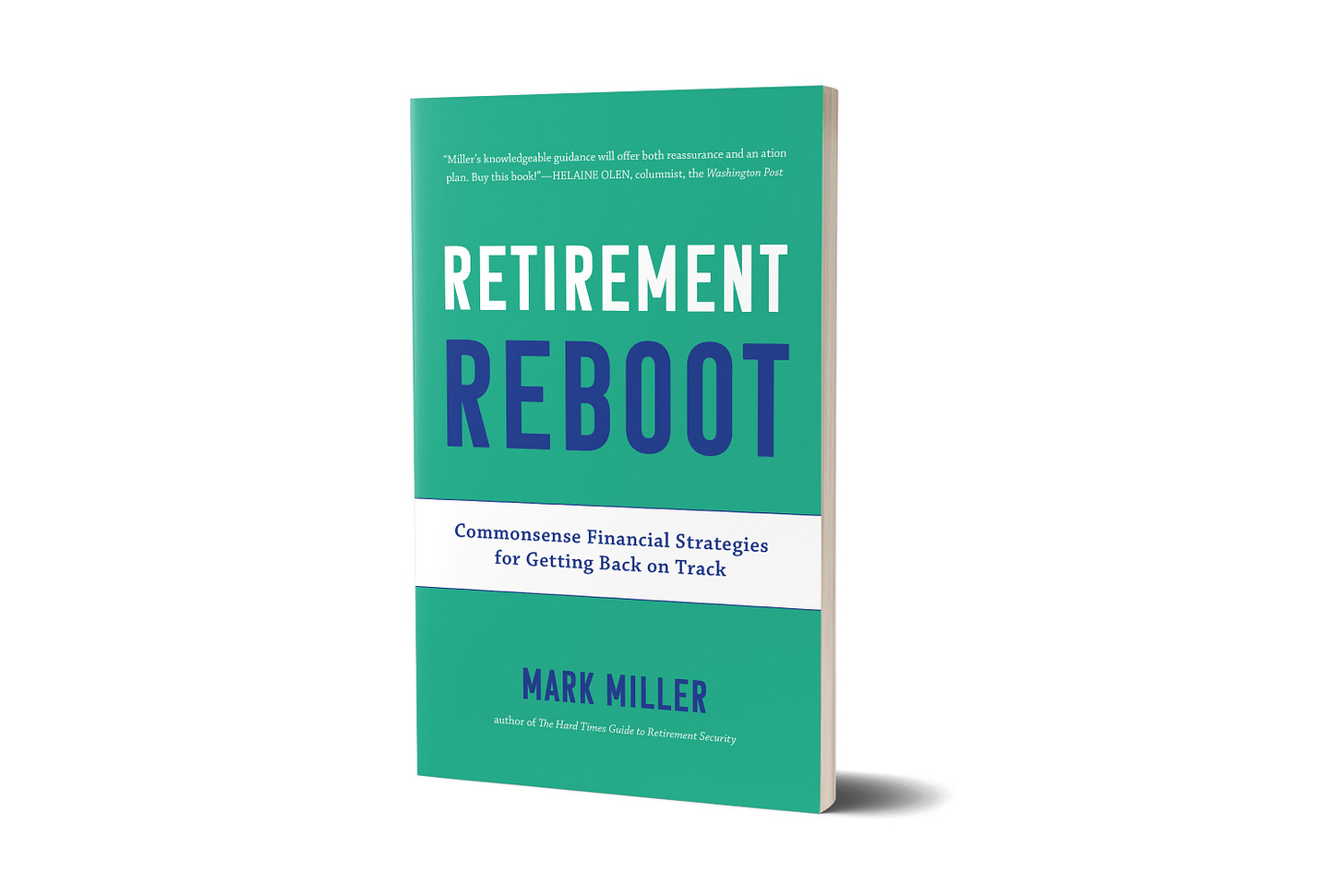How solo gigs can boost your retirement
Entrepreneurship after full-time work can be a path to higher monthly Social Security benefits and saving.
One theme of my new book, Retirement Reboot: Commonsense Financial Strategies for Getting Back on Track, is the critical importance of timing your retirement. Adding a few more years of work to your retirement plan can be one of the best ways to improve retirement security.
Yet many people find it difficult to stay employed. The latest Retirement Confidence Survey from the Employee Benefit Research Institute finds that 46% of retirees leave the workforce earlier than planned. But some people find that they can keep income from work flowing by going into business for themselves.
Entrepreneurship can provide a bridge of income to a later retirement. That income can help you meet living expenses while delaying your Social Security claim, boost those benefits. It might also help you save more for retirement — and it can mean fewer net years of relying on what you’ve saved.
Entrepreneurship comes in many flavors, but think of these businesses as a form of self-employment or gig work. Experts say such businesses often can be started for as little as $5,000 to $10,000 to incorporate, create a website and brand identity, and to put other necessities in place, like bookkeeping software.
But sole entrepreneurship does come with some unique financial challenges. This weekend in the New York Times, I explore the impact of sole proprietorship on income, and the new costs you’ll be taking on.
How would G.O.P. budget demands impact Social Security customer service?
The Social Security Administration (SSA) has been plagued by years of cuts to its administrative budget imposed by Congress just as the aging of the U.S. population has meant an exploding workload. The number of beneficiaries has jumped 21% since 2010, yet its operating budget shrank 17%, adjusted for inflation. Staffing has fallen by 13%, and now is at its lowest level in 25 years.
But all of that would be prologue to even deeper cuts if the bill passed recently by the House of Representatives were to become law. The chart excerpt above, published by the New York Times, shows how the Republican budget bill would affect various federal agencies under two scenarios: the left-hand column displays cuts if the entire non-discretionary budget is reduced by 18% - on the right, you can see the impact if defense, border security and spending on veterans are exempted from the reductions.
An 18% cut to the SSA budget would be devastating to customer service. The 51% cut implied with the aforementioned exempt areas of spending is impossible to contemplate.
Retirement Reboot confirmed: Half of retirees will struggle
The main premise of my new book, Retirement Reboot, is that a substantial share of households will struggle to maintain their standard of living in retirement. Some policy experts dispute that premise, but the data confirms it over and over again.
The latest troubling report comes from the Center for Retirement Research at Boston College, which publishes the National Retirement Risk Index. The NRRI measures the percentage working-age households at risk of being unable to maintain their pre-retirement standard of living in retirement.
The latest edition of the NRRI was published this week. The index has been revised and updated to improve its methodology, but the basic finding hasn’t changed: roughly half of households will struggle to maintain their standard of living in retirement.
There’s quite a bit of informative data in the report, but here’s a chart I find striking. It displays the impact of the U.S. wealth gap on retirement outcomes - which is shocking when you compare the risk levels for low and high income households. Yet, even 30% of high wealth households are considered to be at risk.
Key issues include the inability of so many to save for retirement, and the rising Full Retirement Age (FRA) for Social Security. For everyone born in 1960 and later, the FRA (the age when you qualify to receive 100% of your earned benefit) is 67, up from 65 before the reforms of 1983 were enacted. The FRA acts as a benefit cut by raising the bar for claiming a full benefit.
Politics put the brakes on social impact investing in 401(k) plans
If you predicted that the first veto issued by President Joe Biden would address legislation on socially-conscious investing in 401(k) plans, congratulations. I certainly didn’t see that one coming.
President Biden vetoed legislation in March that would have rescinded a Department of Labor rule paving the way for workplace retirement plans to take environmental, social and governance factors into account when they evaluate investment offerings. It’s a good bet most Americans, including retirement savers, have no idea what ESG is and probably didn’t have a view one way or the other about whether it should be in their 401(k) plan.
But the veto is significant, because it will put the brakes on adoption of ESG options in workplace plans, a trend that already was moving slowly. Learn more in my latest WealthManagement.com column.
What I’m reading
Too many men are screened for prostate cancer . . . Insurers add primary care to their portfolios . . . 401(k) costs coming down, but small plans still twice as expensive.





